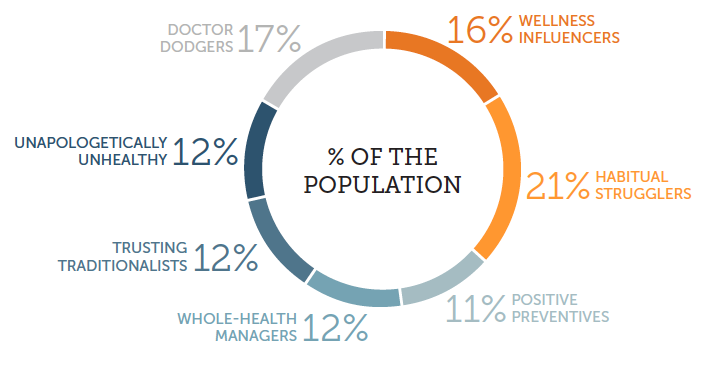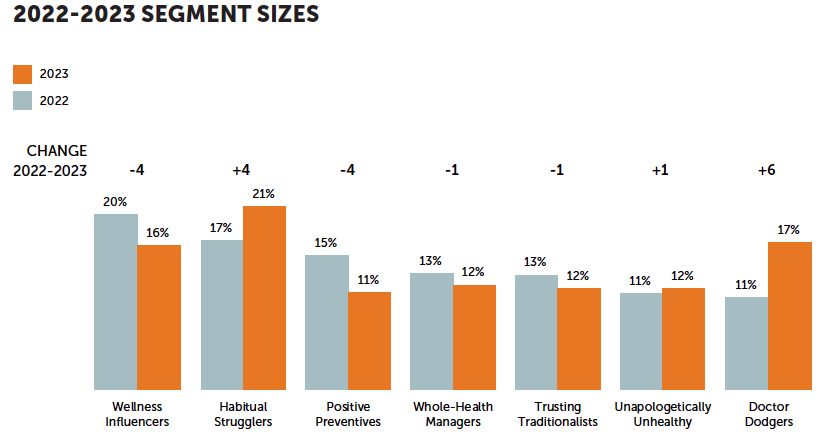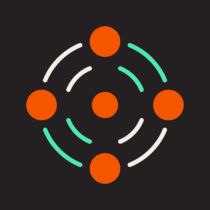Exploring Humanizing Brand Experience Vol 6 findings: Consumer segmentation

If you haven’t already, download the full Humanizing Brand Experience Vol 6 report.
One key ingredient in building a more human brand experience is to know the people you hope to serve.
As healthcare leaders, it’s our goal to create meaningful, human-centered experiences for consumers. But consumers aren’t a uniform group. Just like each of us, they’re unique individuals.
To create a more human brand experience, we need to have a deep understanding of the people we serve—an understanding that goes beyond demographics, and digs deep into their unique needs, desires, and expectations.
In the past, we have introduced Monigle’s custom national segmentation through Humanizing Brand Experience, and the insights gleaned in this year’s report add texture around who you’re serving and who is most frustrated with the gaps in experience that you may be delivering.
Optimistically, this insight could also show you who your biggest fans are and who you might recruit to become advocates of your brand.
Learn more: Exploring Humanizing Brand Experience Vol 6 findings: Key takeaways
Methodology refresh
As opposed to traditional segmentations in the category, our approach segments people based on their relationship with healthcare, not biometrics or demographics. Demographics, as well as a battery of other attributes, are then used to describe each of the segments to bring them to life. This also helps to create a bridge into existing CRM systems so that segmentation can become a part of your microtargeting strategies.
Here are the 7 segments that have emerged from our research and report:
• Wellness Influencers
• Habitual Strugglers
• Positive Preventatives
• Whole-Health Managers
• Trusting Traditionalists
• Unapologetically Unhealthy
• Doctor Dodgers

What’s happening to each of these segments year over year?
With the increasing orientation that consumers have to avoiding healthcare, it’s not surprising to find Doctor Dodgers to be the fastest-growing segment. Interestingly, we’re also seeing an increase in the number of people who classify as Habitual Strugglers, which reflects the deepening health crisis people create by avoiding the care they need.
In contrast, our more engaged segments–Wellness Influencers and Positive Preventives–have declined year over year. This is not the news healthcare wants to hear, as it is incrementally more challenging to bring less engaged people closer to our brands and experiences, but it does match the declining engagement trends discussed above.
Learn more: Webinar: The Ultimate Healthcare Brand, Experience, and Culture Playbook

Stay tuned for the next part in this series where we dive deeper into the Doctor Dodger segment and why this population is avoiding the doctor.
Interested in gaining further insights into each of the segments including experience expectations by segment and a guide to the key messages that will resonate most with each segment? Let’s discuss how you can leverage our segmentation to understand distinct audiences and personalize outreach and communications. Reach out to Kim Hofland at khofland@monigle.com to learn more.



